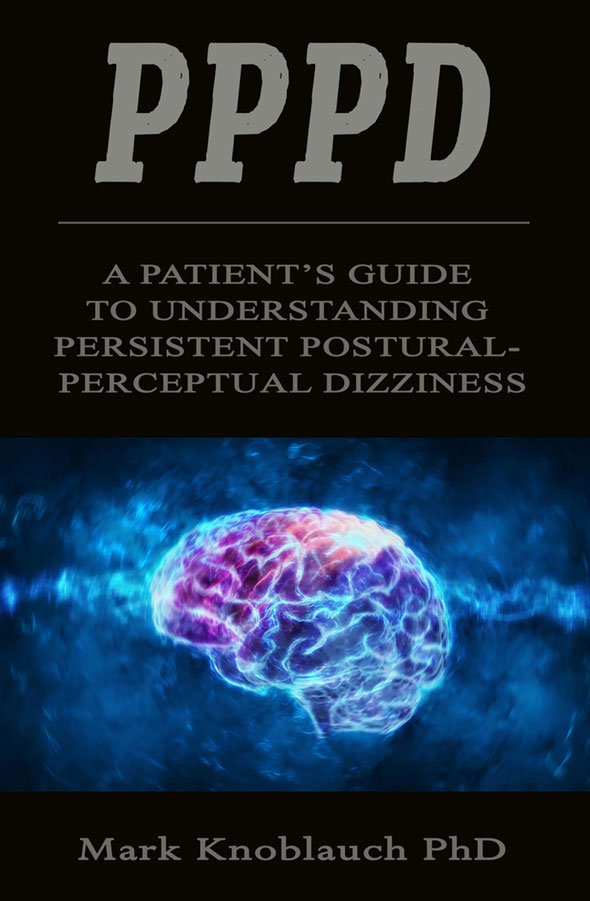PPPD: A patient’s guide to understanding persistent postural-perceptual dizziness
Synopsis
Persistent Postural-Perceptual Dizziness, or “PPPD”, is one of the newest vestibular conditions to receive its official diagnostic criteria. Thought to originate from within the vestibular system and brain, PPPD typically generates chronic dizziness, vertigo, and/or unsteadiness that is worsened when patients are in an upright position. Despite these symptoms, vestibular tests are often found to be normal which ends up leaving patients with no real answers as to the cause of their ongoing dizziness.
PPPD – A Patient’s Guide to Understanding Persistent Perceptual-Postural Dizziness was written for the PPPD patient in order to summarize the available research specific to what PPPD is, who it affects, and how it can be treated. In addition, chapters are included that describe the structure and function of the vestibular system along with summarizing several other related vestibular conditions that are capable of producing symptoms similar to what is experienced with PPPD.
This book is designed to be a comprehensive source of information for new PPPD patients that can educate and empower them in their battle against PPPD. Over 110 research papers are cited throughout the book, helping patients to be armed with the latest and most relevant information that will allow them to have informed and productive discussions with their medical provider.
Excerpts
At present there is no known cause for PPPD. Consequently, we are left with trying to establish a cause based upon the various signs and symptoms that patients commonly report. Given the relative ‘newness’ of PPPD, a verified cause may be elusive for at least the near future given that it can take years of testing and verification in order to establish a firm disease cause. However, as research continues to be conducted, every medical study contributes some small factor that can in turn provide valuable information. As these individual factors continue to build in number, trends can be established which in turn allow for directed, focused research toward establishing a true cause.
If you’re reading this book as a person who has never had vertigo or severe dizziness, it can be difficult to understand the impact that either of these conditions can have on your daily life. A person who experiences vertigo commonly, however, can tell of the difficulty and/or frustration with seemingly menial tasks such as going to the store or keeping an appointment. The difficulty that dizziness and vertigo can bring also invite the psychological element that is involved with PPPD. Because fear or anxiety is an expected accompaniment to symptoms such as vertigo and dizziness, each must be accounted for in patients with PPPD. In fact, patients with anxiety or certain other personality traits appear to be more susceptible to PPPD than those without. One study reported that 60% of patients with PPPD met the criteria for an anxiety disorder, while a separate study found that two-thirds of patients with PPPD exhibited mood disorders and/or anxiety.
The book provides great insight and offers a better understanding of what I am going through. My journey has led me to believe that my treating clinicians are not well versed on this condition and I’ve gained reassurance and encouragement after reading this book.
![]()
The book provides solid scientific analysis of the condition and can serve as a primer for anyone seeking to understand this condition.
![]()
This book is definitely written with the patient in mind. Although it goes over the parts and functions of the vestibular system, it does so in a way that is very easy to understand. The included diagrams are helpful. PPPD is not easy to explain or understand, and the author has done well to do both.
![]()


